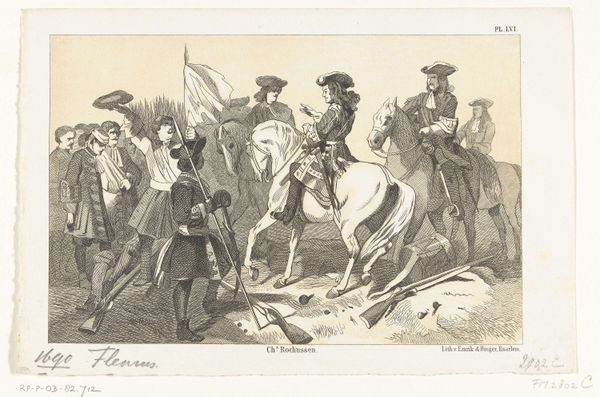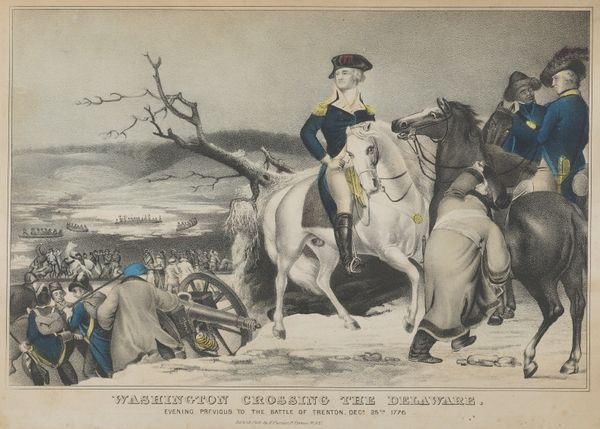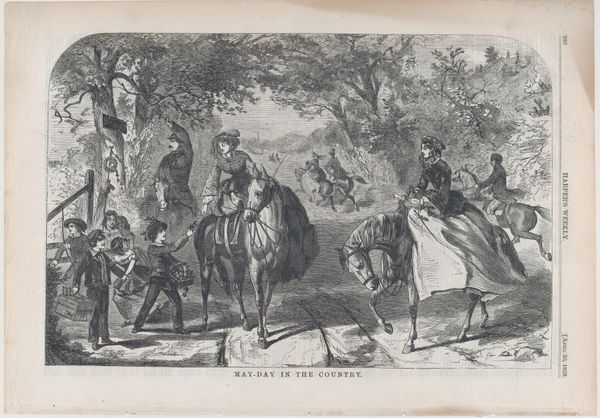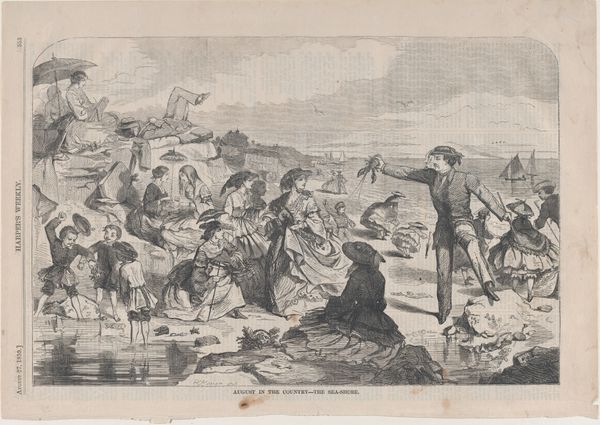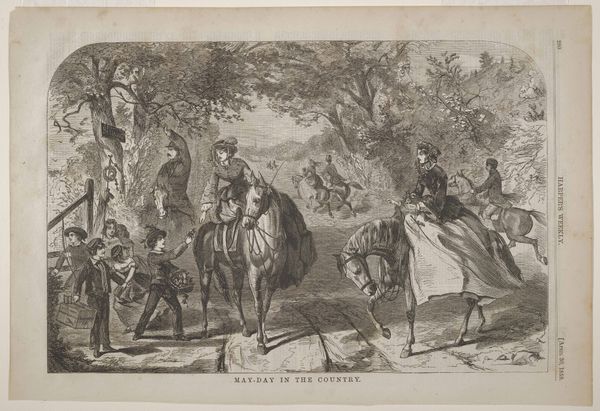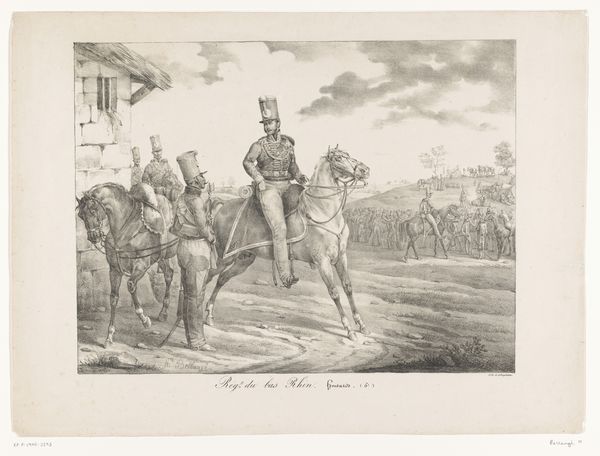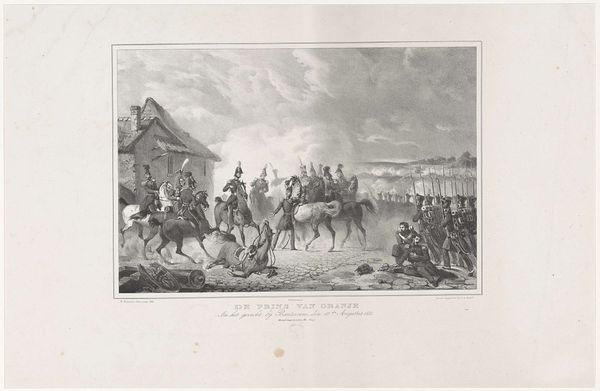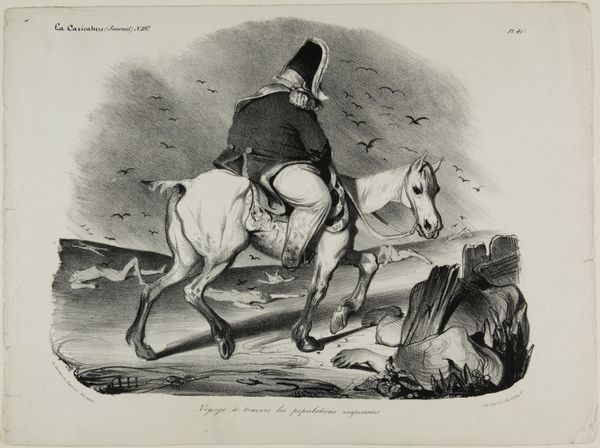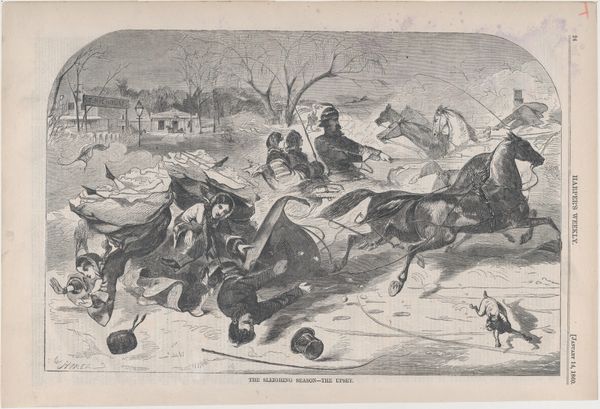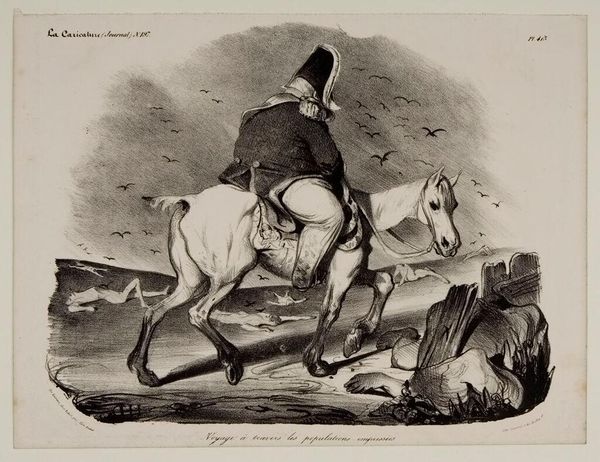
Washington Crossing the Delaware–Evening Previous to the Battle of Trenton, December 25th, 1776 1847
0:00
0:00
drawing, lithograph, print, engraving
#
portrait
#
drawing
#
neoclacissism
#
narrative-art
#
lithograph
# print
#
landscape
#
figuration
#
soldier
#
group-portraits
#
romanticism
#
horse
#
genre-painting
#
history-painting
#
engraving
Dimensions: Image: 8 3/16 × 12 1/2 in. (20.8 × 31.7 cm) Sheet: 10 1/16 × 14 1/8 in. (25.5 × 35.8 cm)
Copyright: Public Domain
Editor: This is "Washington Crossing the Delaware–Evening Previous to the Battle of Trenton, December 25th, 1776," a lithograph from 1847 by Nathaniel Currier. It's a fairly large print, and the way Washington is depicted, so stoic and prominent, gives it a very heroic feel. How should we interpret the scene's presentation? Curator: Consider the date, 1847. The American Revolution had long ended, yet its legacy was still potent. This print was intended for a wide public audience. How would the image of Washington, brave amidst adversity, resonate then? Editor: It probably served as a powerful reminder of American strength and resilience. Was it common to depict historical events in this way at that time? Curator: Precisely. History painting, and particularly scenes from the Revolution, offered a way to promote national unity and celebrate democratic ideals. The heroic depiction of Washington wasn't just about historical accuracy; it was about creating a national icon. Notice the Romantic style, a glorification of an historical event for political messaging. Editor: So the artist wasn’t necessarily trying to be factual but to contribute to a certain national identity through the selective framing of the American Revolution. Curator: Absolutely. It's not just about the historical event itself, but the stories we tell ourselves about who we are as a nation, which had to be sold in galleries and print shops. Who was being shown in this image, and who was conveniently absent or marginalized? How do these visual representations then get recirculated and reinforced? It reflects the power dynamics of the time. Editor: That's a fascinating point; seeing it as more of a cultural artifact than just a historical depiction shifts my understanding. I appreciate your historical and cultural contextualization. It's helped me see past the surface-level heroics. Curator: And I appreciate your perspective, remembering that art always engages in dialogue with viewers across the generations.
Comments
No comments
Be the first to comment and join the conversation on the ultimate creative platform.
